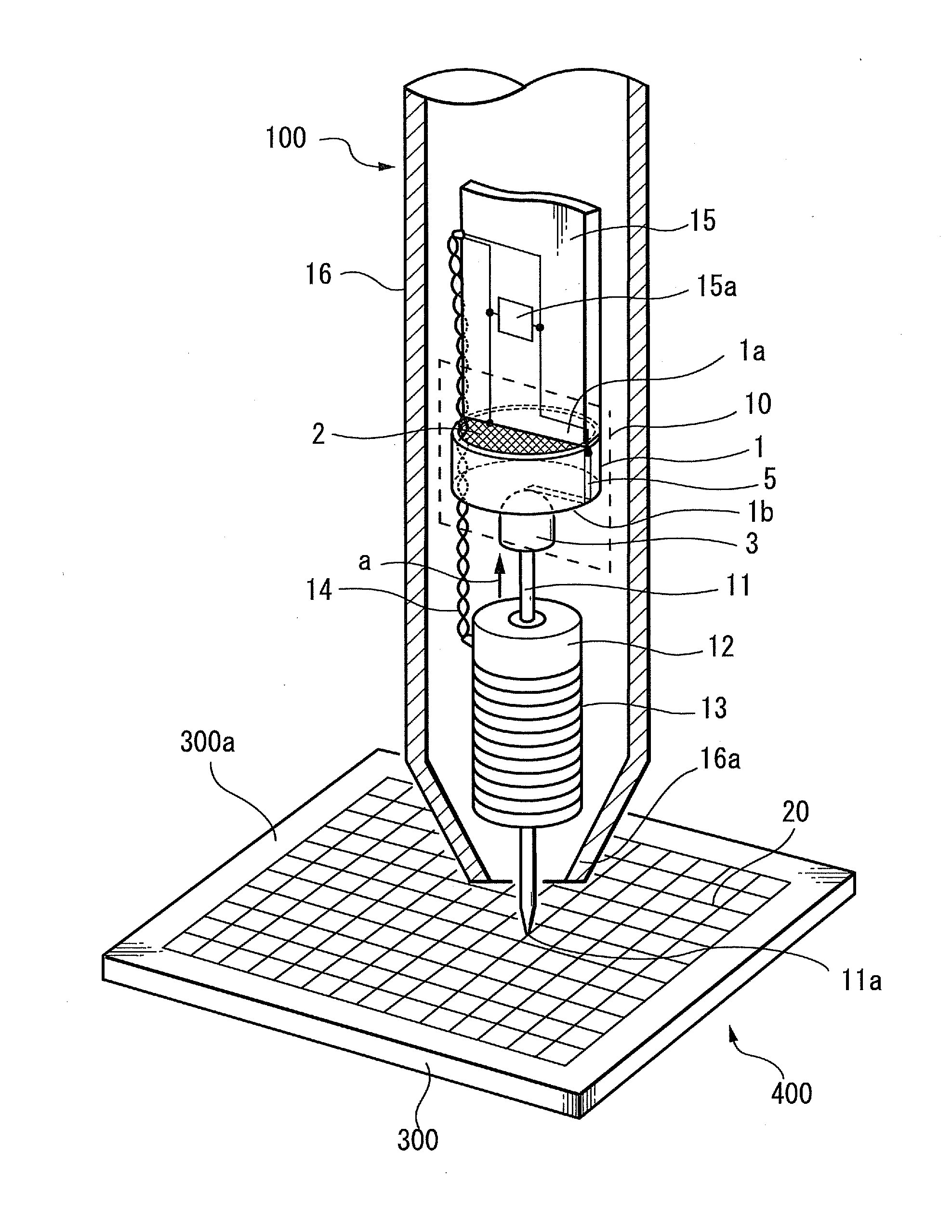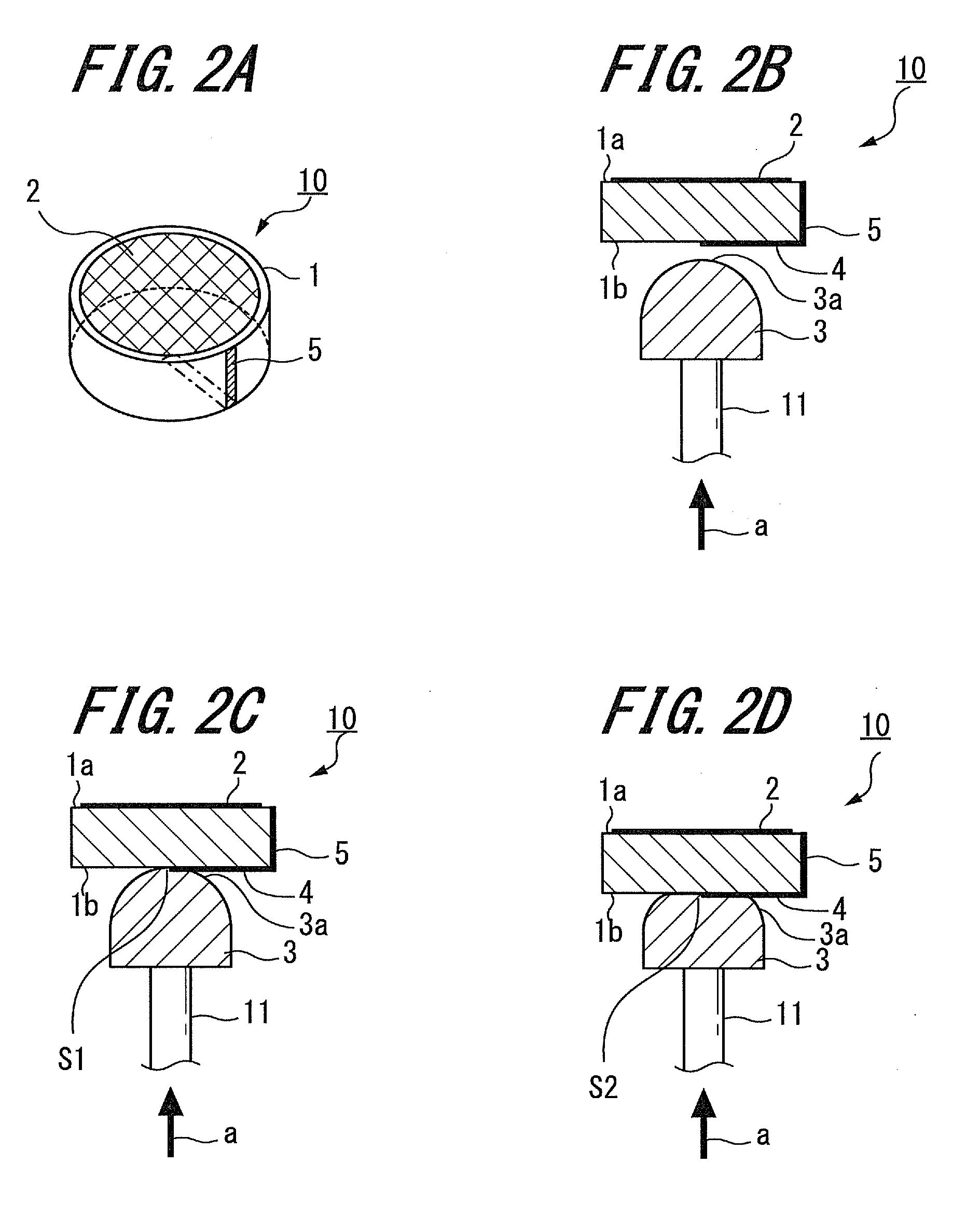Position indicator, variable capacitor and input device
a variable capacitor and input device technology, applied in the direction of variable capacitors, pulse techniques, instruments, etc., can solve the problems of high manufacturing cost, difficult to reduce the outer diameter of the variable capacitor, and uncertain that the variable capacitor disclosed in patent document 2 exhibits sufficiently good characteristics, etc., to reduce the size reduce the inner diameter of the position indicator, and simplify the configuration of the variable capacitor
- Summary
- Abstract
- Description
- Claims
- Application Information
AI Technical Summary
Benefits of technology
Problems solved by technology
Method used
Image
Examples
first embodiment
[0047]The configuration and operation principle of the variable capacitor 10, to which the present invention is applied, will be described below with reference to FIGS. 2A to 2D. FIG. 2A is a top view showing the variable capacitor 10 to which the present invention is applied, FIG. 2B is a side view showing the same, and FIG. 2C is a side view showing the same when a pen pressure is applied.
[0048]The electrode 2 is arranged on the upper surface 1a of the dielectric 1, the electrode 2 having a predetermined area. The electrode 2 is connected to the resonant capacitor 15a of the circuit board 15. Further, the conductive portion 4 is provided on the lower surface 1b of the dielectric 1, and a connecting terminal 5 is provided on a third surface 1c (referred to as “circumferential surface” hereinafter) of the dielectric 1. In the present embodiment, the electrode 2, the conductive portion 4 and the connecting terminal 5 are formed by sintering a silver paste for example.
[0049]The conduc...
second embodiment
[0117]Next, the dielectric according to the present invention will be described below with reference to FIG. 14.
[0118]The second embodiment of the dielectric is denoted by reference numeral 51. The dielectric 51 includes a first dielectric member 51A and a second dielectric member 51B. The two dielectric members 51A, 51B are formed by dividing a flat cylindrical shape dielectric into two in the axial direction, and have the same shape. In other words, the flat cylindrical shape dielectric 51 is formed by arranging the two dielectric members 51A, 51B in the planar direction.
[0119]An electrode 56A is provided on a first surface (referred to as “upper surface” hereinafter) 52 of the first dielectric member 51A. The electrode 56A has a semicircular shape that covers substantially the whole upper surface 52 of the first dielectric member 51A. Further, a conductive portion (not shown) and a connecting terminal (not shown) are provided on the first dielectric member 51A. The conductive por...
PUM
 Login to View More
Login to View More Abstract
Description
Claims
Application Information
 Login to View More
Login to View More - R&D
- Intellectual Property
- Life Sciences
- Materials
- Tech Scout
- Unparalleled Data Quality
- Higher Quality Content
- 60% Fewer Hallucinations
Browse by: Latest US Patents, China's latest patents, Technical Efficacy Thesaurus, Application Domain, Technology Topic, Popular Technical Reports.
© 2025 PatSnap. All rights reserved.Legal|Privacy policy|Modern Slavery Act Transparency Statement|Sitemap|About US| Contact US: help@patsnap.com



